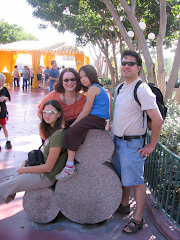
Subject-ART
Grade Level-TWO
GLO- F. Photography and Technographic Arts
Take advantage of the visual art implications of any available technological device, and explore the potential of emerging technologies.
SLO-Included at this level: Emerging technologies, as available and applicable.
http://www.nga.gov/feature/pollock/process3qt.shtm
http://www.jacksonpollock.org/
The multimedia art component is coming much more to the forefront not, although the program of studies has quite a vague reference to media arts and the like because new technologies were just emerging in the mid-1980’s. This is when the Fine Arts sections were last redone.
Description
The first website is about the life of Jackson Pollock and there Quick time film clips of Pollock’s painting style that I would have the students watch. I would also have them look at some of the website guided by myself on the Smartboard. The next website is a fun activity that can be used by the students in the computer lab. Each student can make their own Jackson Pollock drip painting by moving the mouse around and clicking to change the colour. It is a lot of fun and interesting for the students.
Integration
I would integrate this into my classroom, but using both of these websites to introduce the Modern Art unit. I would end the lesson by having the students make drip paintings of their own during an outdoor art lesson, as it can be very messy.
Planning and Preparation
To prepare for this lesson, I would go to the first Pollock website and read the entire content. I would choose some relevant areas to show to the class during my Smartboard lesson. Before the class in the computer lab, I would bookmark the Flash clips for the students, as well as the other Pollock website.
Subject Outcome
The students will gain an appreciation for Jackson Pollock’s modern art process.
ICT Outcomes
Students will gain an understanding of the artist Jackson Pollock through websites featuring said artist. They will use computers to watch a multi media Flash clip on Pollock’s painting process with featured voice clips from the artist. They will make art with the computer and manipulation of the computer mouse.


